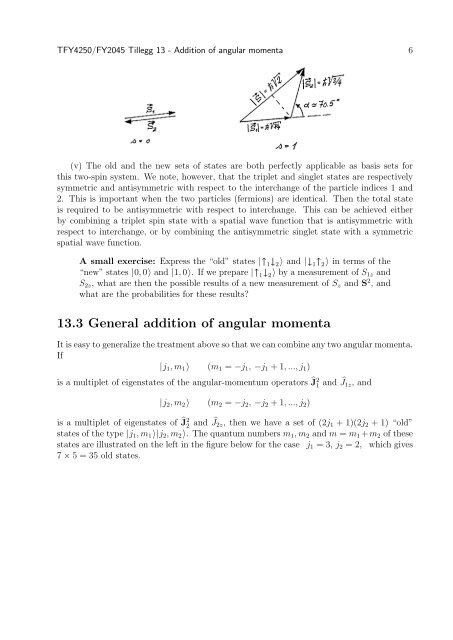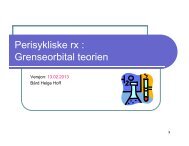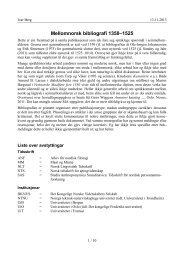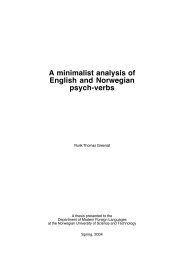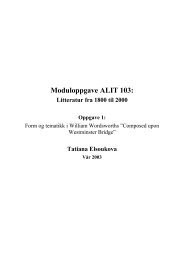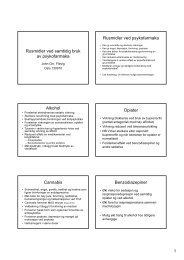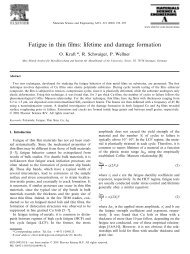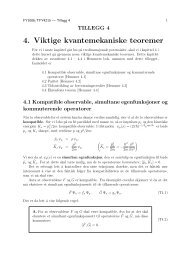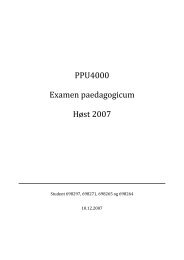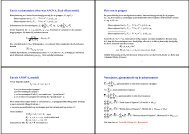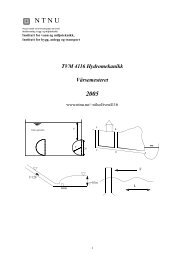You also want an ePaper? Increase the reach of your titles
YUMPU automatically turns print PDFs into web optimized ePapers that Google loves.
TFY4250/FY2045 Tillegg <strong>13</strong> - <strong>Addition</strong> <strong>of</strong> <strong>angular</strong> <strong>momenta</strong> 6<br />
(v) The old and the new sets <strong>of</strong> states are both perfectly applicable as basis sets for<br />
this two-spin system. We note, however, that the triplet and singlet states are respectively<br />
symmetric and antisymmetric with respect to the interchange <strong>of</strong> the particle indices 1 and<br />
2. This is important when the two particles (fermions) are identical. Then the total state<br />
is required to be antisymmetric with respect to interchange. This can be achieved either<br />
by combining a triplet spin state with a spatial wave function that is antisymmetric with<br />
respect to interchange, or by combining the antisymmetric singlet state with a symmetric<br />
spatial wave function.<br />
A small exercise: Express the “old” states |↑ 1 ↓ 2 〉 and |↓ 1 ↑ 2 〉 in terms <strong>of</strong> the<br />
“new” states |0, 0〉 and |1, 0〉. If we prepare |↑ 1 ↓ 2 〉 by a measurement <strong>of</strong> S 1z and<br />
S 2z , what are then the possible results <strong>of</strong> a new measurement <strong>of</strong> S z and S 2 , and<br />
what are the probabilities for these results?<br />
<strong>13</strong>.3 General addition <strong>of</strong> <strong>angular</strong> <strong>momenta</strong><br />
It is easy to generalize the treatment above so that we can combine any two <strong>angular</strong> <strong>momenta</strong>.<br />
If<br />
|j 1 , m 1 〉 (m 1 = −j 1 , −j 1 + 1, ..., j 1 )<br />
is a multiplet <strong>of</strong> eigenstates <strong>of</strong> the <strong>angular</strong>-momentum operators Ĵ2 1 and Ĵ1z, and<br />
|j 2 , m 2 〉 (m 2 = −j 2 , −j 2 + 1, ..., j 2 )<br />
is a multiplet <strong>of</strong> eigenstates <strong>of</strong> Ĵ2 2 and Ĵ2z, then we have a set <strong>of</strong> (2j 1 + 1)(2j 2 + 1) “old”<br />
states <strong>of</strong> the type |j 1 , m 1 〉|j 2 , m 2 〉. The quantum numbers m 1 , m 2 and m = m 1 +m 2 <strong>of</strong> these<br />
states are illustrated on the left in the figure below for the case j 1 = 3, j 2 = 2, which gives<br />
7 × 5 = 35 old states.


